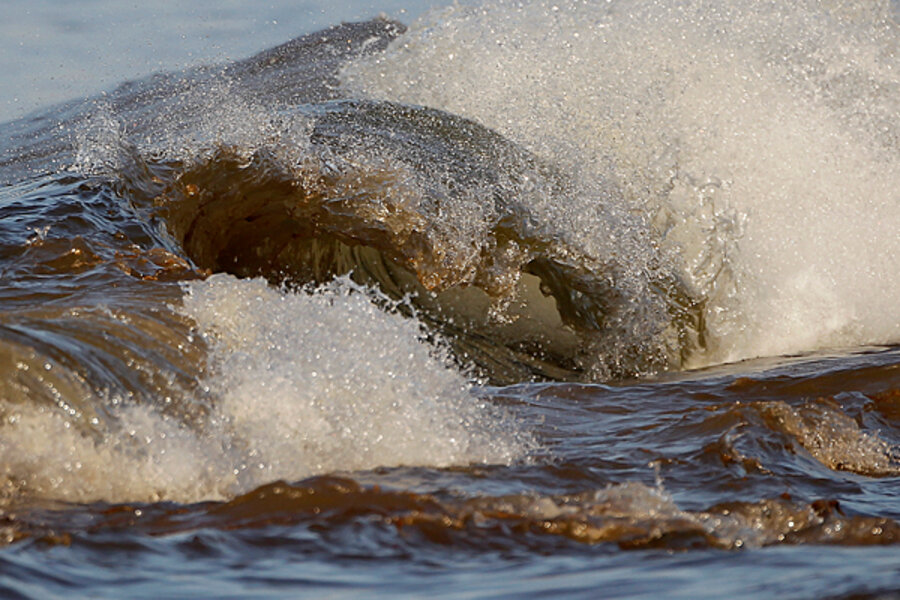Gulf oil spill: Will a hurricane throw off efforts at the well?
Loading...
A low-pressure system developing in the western Caribbean has Coast Guard officials preparing for the possibility that they’ll need to temporarily shut down efforts to deal with the Gulf oil spill.
A US Air Force plane was conducting a reconnaissance mission Friday to determine the strength of the storm, according to the National Hurricane Center. Already, the hurricane center has predicted that the low-pressure system has an 80 percent chance of becoming a hurricane in the next 48 hours as it moves toward the Yucatán Peninsula and into the Gulf of Mexico.
In a media briefing with reporters Friday morning, Coast Guard Adm. Thad Allen said he will suspend recovery efforts if winds reach a gale force of 40 knots or greater (46 miles an hour or more) and the storm is judged to be at least 120 hours away from hitting the base of operations at the well.
IN PICTURES: Response to the oil spill on the Gulf Coast
Being one step ahead of the storm before it gathers strength is now a top priority of recovery operations.
“We’re not even waiting because you don’t know,” Allen said. “It could move into a [Category] 2 or 3 or 4 hurricane before it gets here.” Despite the pressure to collect oil, which is gushing up to 60,000 barrels (or 2.5 million gallons) a day, Allen said, “whatever the flow rate is now ... it will be unattended.”
A hurricane of any strength could wreak havoc on the fleet of 6,300 vessels that took two months to assemble to mitigate the oil spill.
One important task would be to disconnect two vessels from their respective riser pipes, which are used to draw up oil. The task would take a different length of time for each vessel. The Discoverer Enterprise, which is connected to the well’s containment cap, requires 114 hours, or nearly five days, to disassemble, while the Q4000, which is siphoning oil from the blowout preventer’s choke line, requires 56 hours, or more than two days, to disconnect.
A hurricane could deal a big setback to the drilling of two relief wells, which are intended to stop the oil flow as early as August. Workers would need at least 104 hours, or more than four days, to secure the drill pipe to so it could withstand a storm and be stable enough to initiate at a later date, Allen said.
One contingency plan calls for dividing workers into essential and nonessential categories, the essential workers relocating to emergency centers where they would have contact with state and local officials and continue planning and analytical efforts. Nonessential workers could evacuate to other locations.
“Overall, our goal is the safety of our personnel and [the] people on those rigs out there,” Allen said.
A hurricane’s high winds could have one benefit: Surface oil could biodegrade faster, reports the National Oceanic and Atmospheric Administration.
The hurricane season started June 1. Because so little is known about this storm, which would be called hurricane Alex, it is unclear where the oil would spread. The existing storm surge is moving to the west of the oil slick, which means it is likely the oil would go toward the coast rather than farther out to sea.
IN PICTURES: Response to the oil spill on the Gulf Coast
Related:





